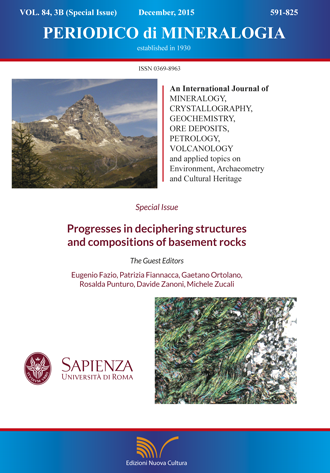39Ar-40Ar geochronology of mono- and polymetamorphic basements
DOI:
https://doi.org/10.2451/2015PM0454Keywords:
39Ar-40Ar dating, diffusion, geochronology, eclogite dating, Lepontine eventAbstract
The 39Ar-40Ar technique is often used to date the metamorphic evolution of basement rocks. The present review article examines systematic aspects of the K-Ar decay system in different mineral chronometers frequently found in mono- and polymetamorphic basements (amphibole, biotite, muscovite/phengite, K-feldspar). A key observation is that the measured dissolution rate of silicates in aqueous fluids is many orders of magnitude faster, and has a much lower activation energy, than the rate of Fickian diffusion of Ar. The effects of this inequality are patchy age zonations, very much like those observed in many U-Pb chronometers, unaccompanied by intra-crystalline bellshaped Ar loss profiles. Recognizing the importance of the respective rate constants in field situations leads to re-evaluating the ages and the interpretive paradigms in classic examples such as the Central Alpine "Lepontine" amphibolite event and the Western Alpine eclogitic event.


